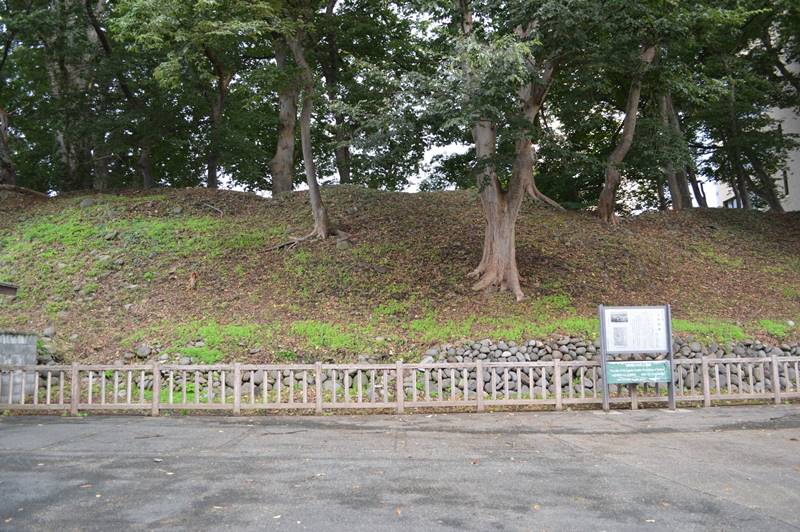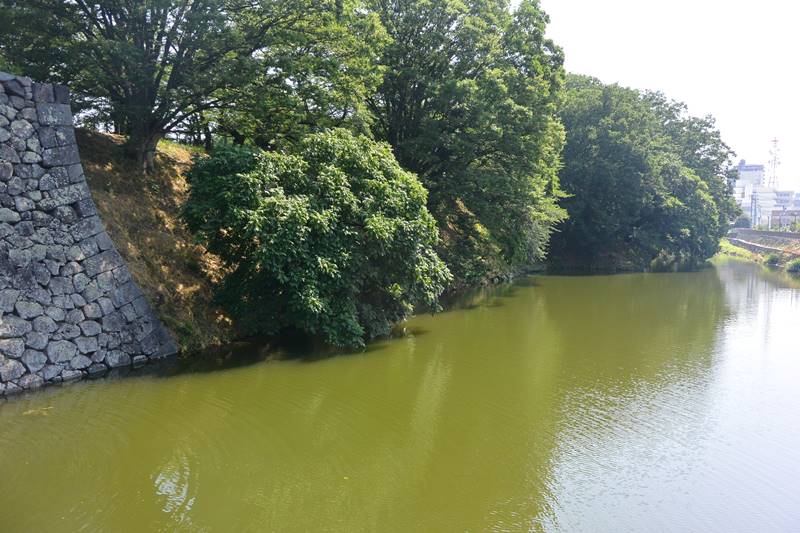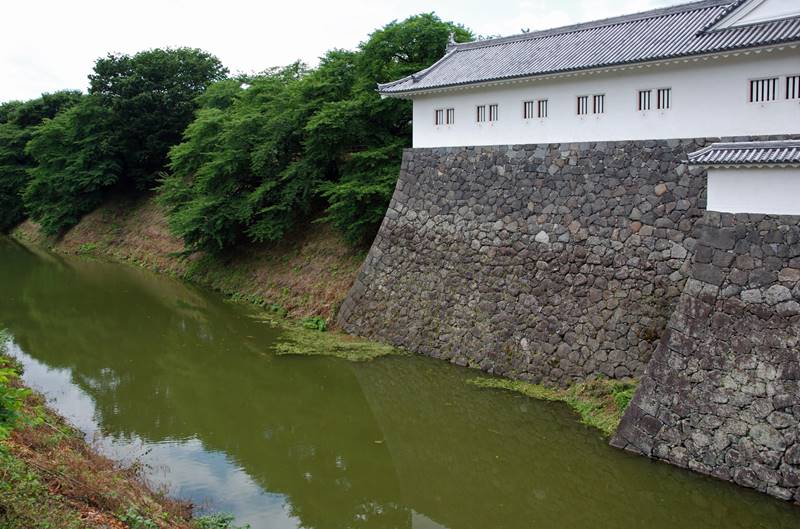This is all about Yamagata Castle Ruins you want to know.
Every information you get on this site will be from a credible source based on Japanese history (books for reference).
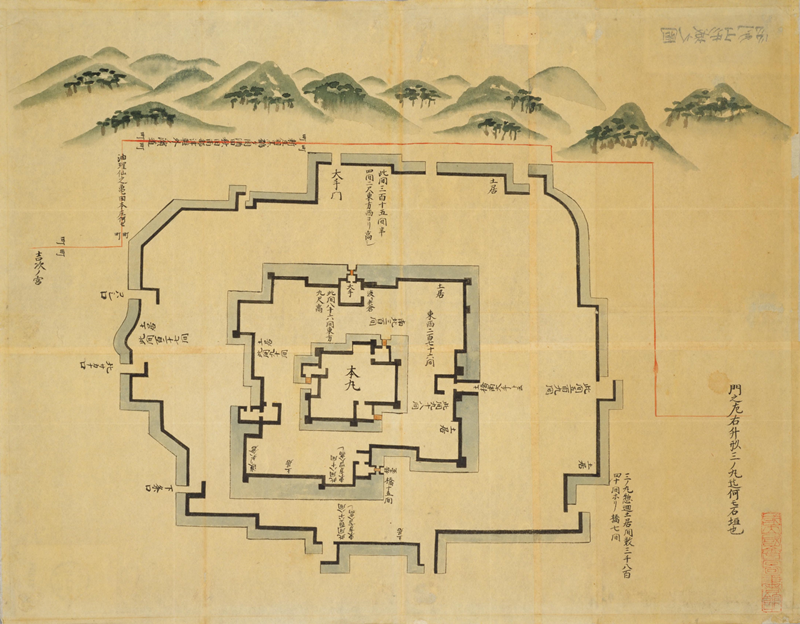
Collected by the Inagaki family, the Toba Daimyō from the mid-Edo period to the Meiji Restoration, as materials for military studies. There are about 350 illustrations, but there is no uniformity because only illustrations of castles, illustrations including castle towns, and old battlefield illustrations are mixed.
Another typical example of a castle picture in the Edo period is "The Shōhō Shiroezu", picture of the castle and castle town that the Edo Shogunate ordered the daimyō to create and submit,aggregating military information such as the buildings inside the castle, the height of the stone wall, the width of the moat and the water depth, etc., it also details the location and shape of the castle town and the mountain river.
Profile : Yamagata Castle
| Location | Yamagata City, Yamagata Prefecture |
| Also known as | Kasumi Castle |
| Type of castle | Flatland |
| Mountain's name | ー |
| Elevation | ー |
| Condition | Restored No Main keep but other buildings |
| Designation | Nationai Historic Sites |
| Year built | 1356 |
| Abolished | 1871 |
| Castle lord | Shiba Kaneyori (also named : Mogami Kaneyori) |
| Refurbishment lord | Mogami Yoshiaki |
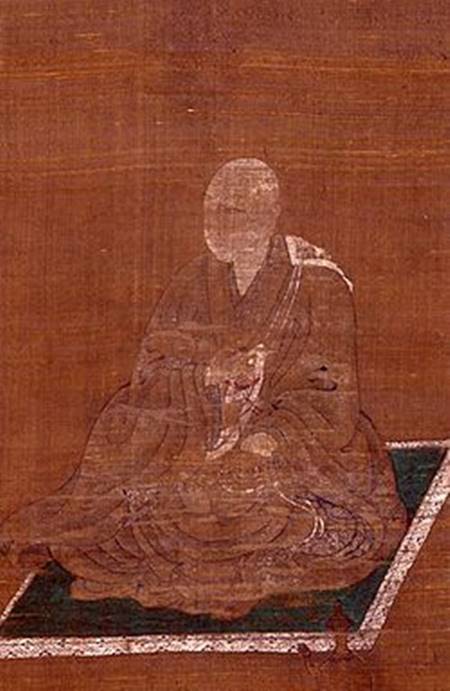
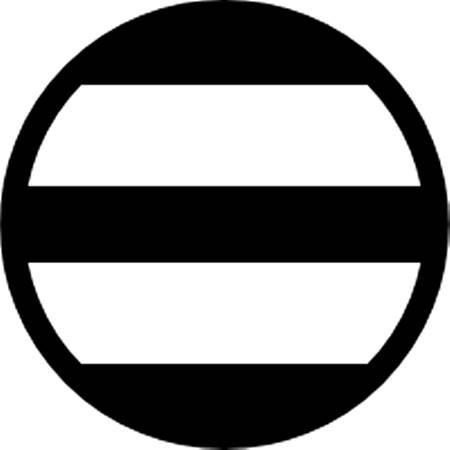
The family crest was originally created from the pattern that the emperor and the royal family put on the kimono, and the pattern was made into a fixed pattern, and the one attached to his own oxcart is said to be the beginning of the family crest. The warlords drew large crests on the flag-fingers, used to distinguish enemy views on the battlefield, and used by the generals to determine which warlords were active and how much.
Yamagata Castle admission
admission fee : free reference official site (japanese)
Yamagata Castle Google Map
Yamagata Castle Images
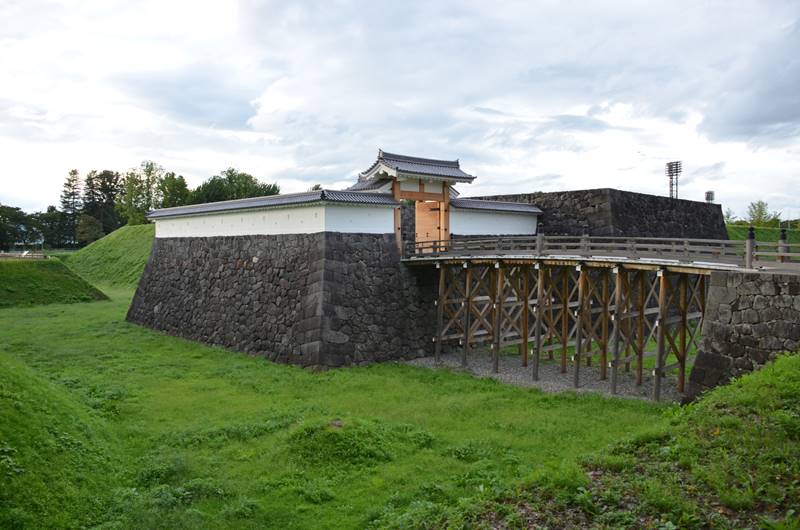
Yamagata Castle, located in the south side of Yamagata Basin,is basically a castle protected by earthworks and a moat, except for the area around Koguchi(the entrance to Honmaru). Nawabari is a huge outline that surrounds the Ninomaru and Sannomaru concentrically around a nearly square Honmaru, and the main keep has not been built. Entering the Meiji era, the moat was reclaimed, the building was demolished, but when the Yamagata clan was sealed in 1870, the castle, which had not been used for a long time, was severely damaged, and the outer wall and Yagura were unable to withstand the wind and snow. When the castle was put up for sale, Yamagata City bought it and invited an army garrison. It became the camp site of the 32nd Infantry Regiment, the tower and palace inside the castle were destroyed, and the Honmaru was reclaimed. Sannomaru moat was also reclaimed and used as cultivated land.
In commemoration of the Triumph of the Russia-Japanese War, a return soldier of the 32nd Infantry planted a Yoshino cherry tree in 1906.
Now, it is a famous spot for cherry blossoms.
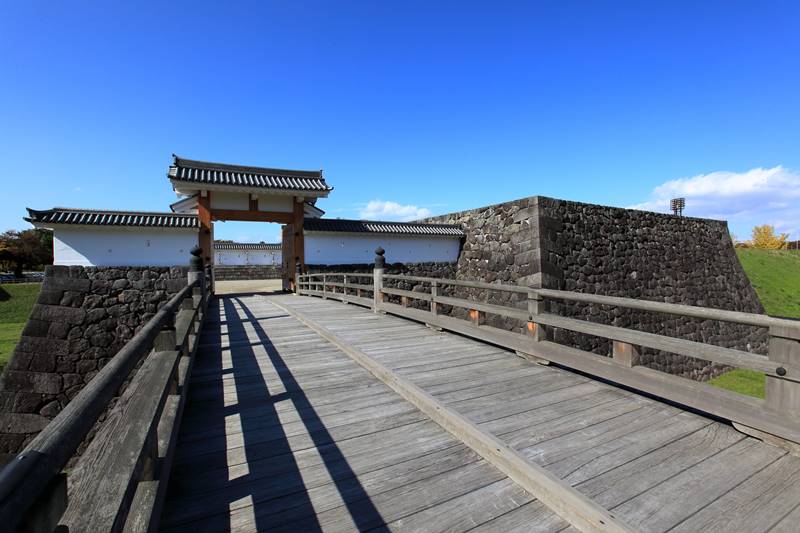
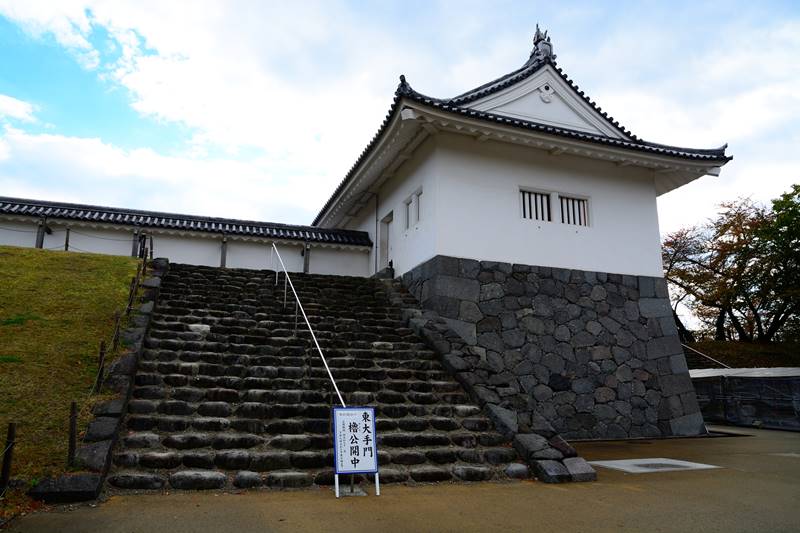
To commemorate the 100th anniversary of the municipal organization in 1991, Ninomaru Higashi Otemon was restored faithfully with wooden construction. The gates are from Kōraimon, Yaguramon, and Tsuduki-Yagura. The typical shape of the Masugata-mon gate of a modern castle can be seen.
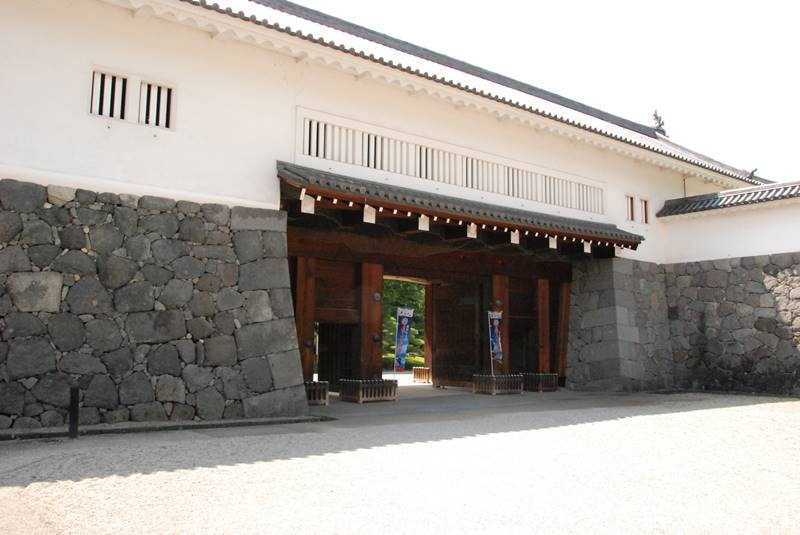
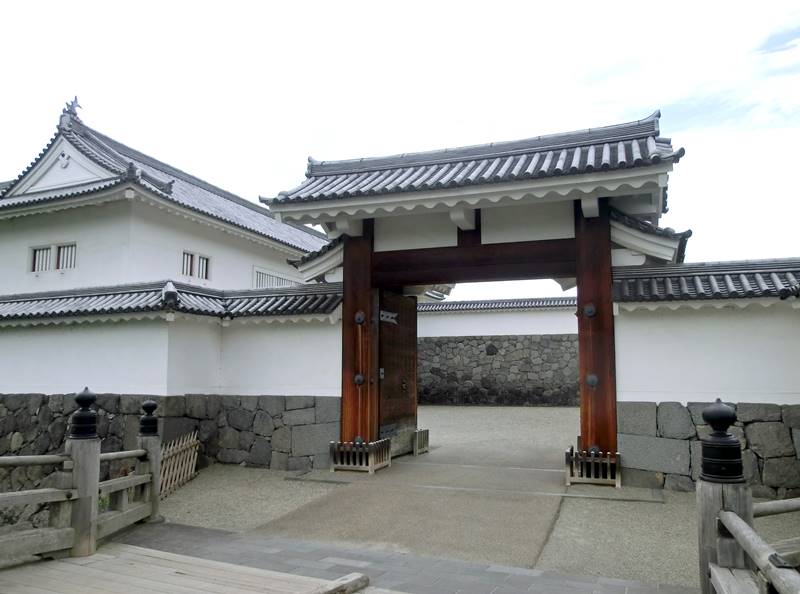
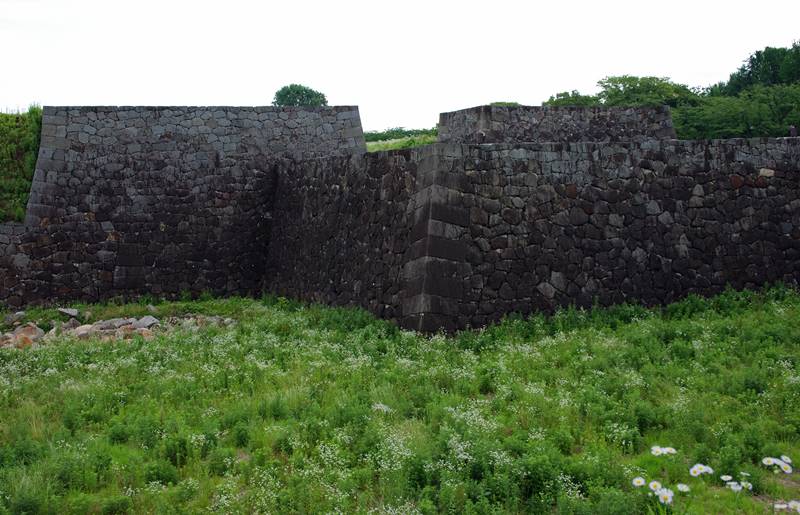
The stones are inset tightly into place and the corners and rough edges are smoothed some to help them fit together better.
The remaining holes are filled with smaller stones to tightly fill the gaps. This makes a stronger wall than Nozurazumi style and these walls can be built higher.
